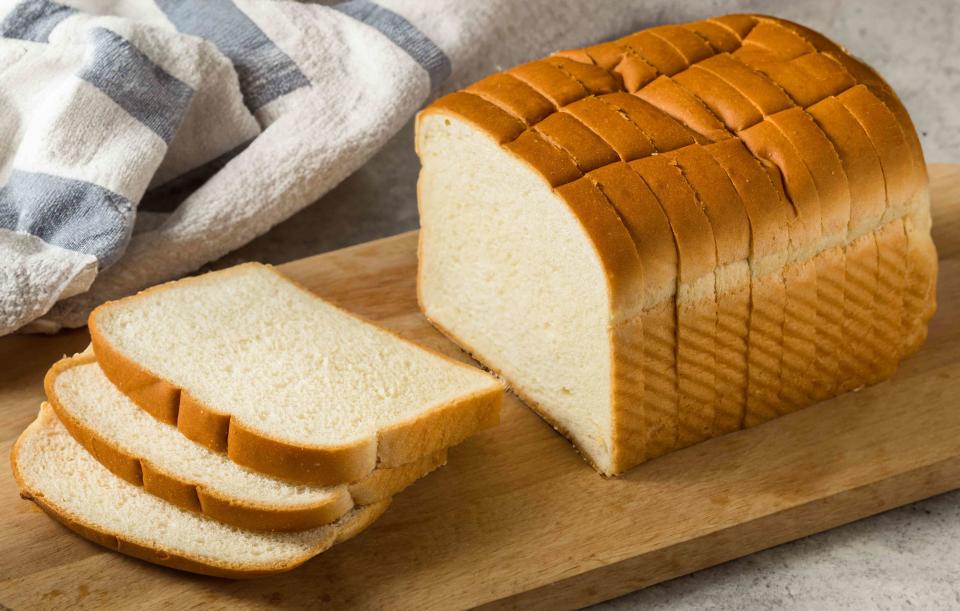What Happens if You Eat Moldy Bread? Food Safety Experts Weigh In
The problem might be bigger than you think.

Getty Images
If you buy or bake bread, at one point or another, you've probably ended up discovering a spot or more of mold on your loaf. That white or green fuzz is annoying and unappealing, and it’s a clear indication that your bread is past its prime. But what happens if you eat moldy bread—is it unsafe? We're also curious about why mold grows on bread and if it's safe to remove the moldy slices and eat the rest of the loaf. We consulted food safety experts to learn if you can eat moldy bread.
Meet Our Expert
Nicole Garrison, nutritionist, chef, food scientist, mycology specialist, and ServSafe manager
Gevork Kazanchyan MS, REHS, CP-FS, professor of environmental health at California State University, Northridge, and former public health deputy
Related: How to Know If That Bruised or Partially Rotten Produce Is OK to Eat
What Is Mold?
According to the Centers for Disease Control and Prevention, mold is a "fungal growth that forms and spreads on various kinds of damp or decaying organic matter." It turns out that mold is everywhere, and not all of it is bad. Blue cheese is blue, thanks to mold—and mold is also in bread. "Spores are everywhere and can be introduced to bread at every stage of its processing. In fact, we intentionally introduce yeast (microscopic fungi) to bread for its ability to leaven bread, improving texture and adding flavor as a result of yeasts' reproductive process," says Nicole Garrison, a nutritionist, chef, food scientist, and mycology specialist, as well as a ServSafe Manager.
Why Mold Grows on Bread
When it comes to unintentional mold, it's thanks to fungi, Garrison says. "Bread becomes moldy as a result of the presence of fungi. When fungi mature, they will produce spores; this is how fungi will spread their genetic material," she says. "It does this much like a dandelion spreads its seeds, making the genetic material easily airborne so it may reproduce elsewhere."
"The reason why we see food spoilage in bread is if food has been warm or moist or it has been around long enough for a disease-growing organism to grow," says Gevork Kazanchyan, environmental health professor at Cal State University Northridge. "The mold would not have grown if a food-preserving environment was maintained."
Garrison agrees, "Mold spores take hold when moisture and a food source are present, and we will say it activates the spores." The best way to avoid your bread becoming moldy is to eliminate as much moisture as possible.
There Might Be More Mold Than You See
Kazanchyan explains that moldy bread is a sign that it is spoiled, and once food spoils, it can be hard to isolate what is most harmful. So even if it's not the mold that's the problem, moldy bread is problematic. And while you might not be able to see mold on every slice, that doesn't mean it isn't there.
"There is a lot of microscopic activity going on that the eye cannot see. The spores are like the tip of the iceberg; the majority of the fungal growth is actually beneath the surface. By touch, you may feel slightly more density in the area where the mycelium is present. Mycelium is a web-like structure that breaks down nutrients visually, similar to the root system of a tree," says Garrison.
Related: How to Tell If Your Eggs Have Gone Bad—and If They're Still Safe to Eat
What Happens if You Eat Moldy Bread?
When it comes to bread, surface mold isn't just ugly and unpalatable; it can be unsafe. "Mold can trigger respiratory issues such as asthma and allergic reactions, which will range in severity depending upon the sensitivity of the individual," says Garrison.
It's hard to say for sure how dangerous a particular loaf of moldy bread can be to your health. "Without testing the sample in a lab, you cannot be certain that particular mold strain will or will not produce mycotoxins, which could be fatal," says Garrison.
But it's best to play it safe and not eat bread with mold. Kazanchyan and Garrison agree that populations at higher risk, such as babies, small children, pregnant individuals, older people, and those with a compromised immune system, should avoid contact with mold whenever possible.
How to Store Bread to Prevent Mold
Generally, bread is stored at room temperature because refrigeration causes the starches in bread to recrystallize and become dry. Our experts suggest freezing bread you don't intend to eat in a day or two, rather than refrigerating it. They say freezing is best for longer storage in terms of preventing spoilage, including mold, and preserving not only freshness but flavor and texture.
Related: 11 Foods You Should Never Refrigerate (but Probably Are)
Read the original article on Martha Stewart.

